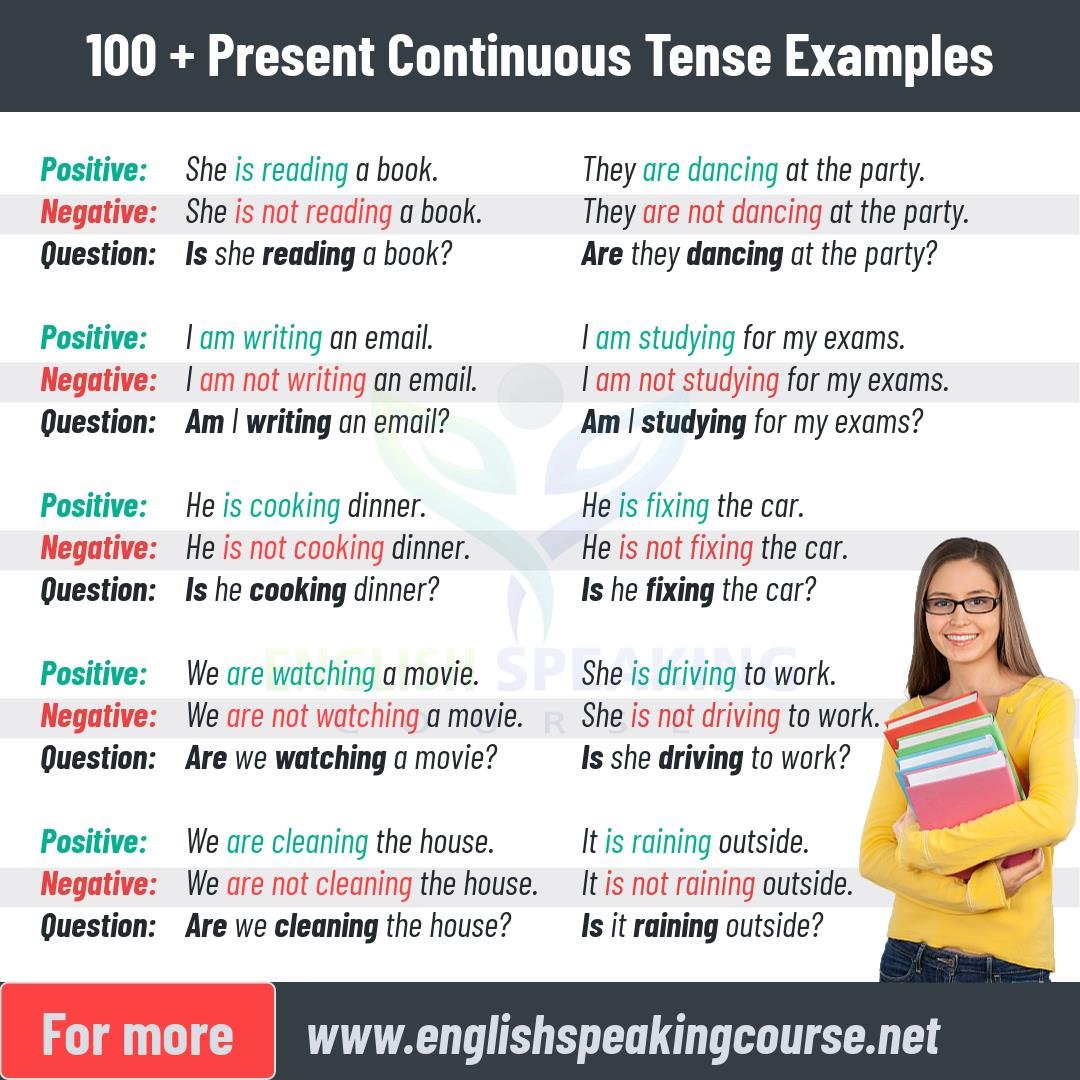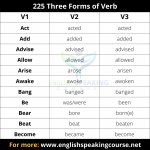Table of Contents
ToggleExplaining Present Continuous Tense
Present Continuous Tense: In the realm of English grammar, tenses play a crucial role in shaping the way we communicate. One of the fundamental tenses that allow us to express actions happening in the present is the Present Continuous Tense. In this article, we will delve deep into this tense, dissecting its structure and usage with real-life examples.
Understanding the Basics
Before we dive into the intricacies, let’s establish a foundation by understanding what the Present Continuous Tense is all about.
What is Present Continuous Tense?
The Present Continuous Tense, also known as the Present Progressive Tense, is used to describe actions that are happening at the moment of speaking. These actions are in progress and not completed.
Structure of Present Continuous Tense
To form the Present Continuous Tense, you need two components: the present tense of the verb ‘to be’ and the base form of the main verb with the “-ing” suffix attached.
- Positive: Subject + am/is/are + base form of the verb + -ing (e.g., She is reading a book.)
- Negative: Subject + am not/isn’t/aren’t + base form of the verb + -ing (e.g., They aren’t watching TV.)
- Interrogative: Am/Is/Are + subject + base form of the verb + -ing? (e.g., Are you playing football?)
Present Continuous Tense in Action
Now that we have a grasp of the structure, let’s explore how the Present Continuous Tense is used in various situations.
1. Actions Happening Now
The primary use of the Present Continuous Tense is to describe actions taking place at the moment of speaking. For example:
- Example 1: “I am typing this article.”
- Example 2: “They are having dinner right now.”
2. Temporary Actions
This tense can also be used to indicate actions that are happening temporarily, not necessarily at the exact moment of speaking but in the present timeframe.
- Example 1: “She’s staying with her aunt for a few weeks.”
- Example 2: “He’s working on a project this month.”
3. Future Plans and Arrangements
Surprisingly, the Present Continuous Tense can also be employed to discuss future plans and arrangements when there’s a sense of intention or commitment.
- Example 1: “I’m meeting Jane at the café tomorrow.”
- Example 2: “They are flying to Paris next week.”
Present Continuous vs. Simple Present
It’s important to differentiate between the Present Continuous Tense and the Simple Present Tense, as they have distinct uses.
Present Continuous vs. Simple Present
- The Present Continuous Tense describes actions in progress at the moment of speaking, while the Simple Present Tense expresses habitual actions or general truths.
- Present Continuous: “I am reading a book right now.” (action in progress)
- Simple Present: “I read books.” (habitual action)
Common Mistakes to Avoid
In the process of learning any new tense, certain common mistakes tend to crop up. Here are a few to watch out for:
1. Misplacing the ‘ing’
Ensure that the ‘-ing’ form is correctly attached to the verb. Mistakes such as “He is playingsoccer” should be corrected to “He is playing soccer.”
2. Neglecting the ‘to be’ Verb
Don’t forget to include the appropriate form of ‘to be’ (am/is/are) in your sentence structure. For instance, “She playing tennis” should be revised to “She is playing tennis.”
Conclusion
In conclusion, the Present Continuous Tense adds a dynamic element to our conversations, allowing us to express actions in progress with precision. By mastering this tense, you can elevate your English language skills and communicate more effectively.
FAQs
1. When should I use the Present Continuous Tense?
- Use it to describe actions happening at the moment of speaking or actions occurring in the present timeframe.
2. Can I use the Present Continuous Tense for future plans?
- Yes, you can use it for future plans when there’s a sense of intention or commitment.
3. What’s the difference between Present Continuous and Simple Present?
- Present Continuous is for actions in progress, while Simple Present is for habitual actions or general truths.
4. Are there irregular verbs in the Present Continuous Tense?
- No, the verb form in the Present Continuous Tense is regular, with the ‘-ing’ suffix added to the base form.
5. How can I improve my understanding of English tenses?
- Practice, read, and engage in conversations to become more comfortable with using different tenses effectively.
Present Continuous Tense: Positive
1. She is reading a book.
2. They are playing soccer in the park.
3. I am writing an email.
4. He is cooking dinner.
5. We are watching a movie.
6. The cat is chasing the mouse.
7. They are dancing at the party.
8. She is singing a beautiful song.
9. I am studying for my exams.
10. He is fixing the car.
11. We are painting the walls.
12. They are discussing the project.
13. It is raining outside.
14. She is jogging in the park.
15. They are building a sandcastle on the beach.
16. I am talking to my friend on the phone.
17. He is playing the guitar.
18. We are traveling to Europe next week.
19. They are laughing at a joke.
20. She is taking a shower.
21. I am learning a new language.
22. He is waiting for the bus.
23. We are attending a concert tonight.
24. They are shopping for groceries.
25. She is driving to work.
26. I am meeting my colleague for lunch.
27. He is mowing the lawn.
28. We are cleaning the house.
29. They are studying together in the library.
30. She is cooking breakfast for her family.
Negative sentences
1. She is not reading a book.
2. They are not playing soccer in the park.
3. I am not writing an email.
4. He is not cooking dinner.
5. We are not watching a movie.
6. The cat is not chasing the mouse.
7. They are not dancing at the party.
8. She is not singing a beautiful song.
9. I am not studying for my exams.
10. He is not fixing the car.
11. We are not painting the walls.
12. They are not discussing the project.
13. It is not raining outside.
14. She is not jogging in the park.
15. They are not building a sandcastle on the beach.
16. I am not talking to my friend on the phone.
17. He is not playing the guitar.
18. We are not traveling to Europe next week.
19. They are not laughing at a joke.
20. She is not taking a shower.
21. I am not learning a new language.
22. He is not waiting for the bus.
23. We are not attending a concert tonight.
24. They are not shopping for groceries.
25. She is not driving to work.
26. I am not meeting my colleague for lunch.
27. He is not mowing the lawn.
28. We are not cleaning the house.
29. They are not studying together in the library.
30. She is not cooking breakfast for her family.
Interrogative sentences
1. Is she reading a book?
2. Are they playing soccer in the park?
3. Am I writing an email?
4. Is he cooking dinner?
5. Are we watching a movie?
6. Is the cat chasing the mouse?
7. Are they dancing at the party?
8. Is she singing a beautiful song?
9. Am I studying for my exams?
10. Is he fixing the car?
11. Are we painting the walls?
12. Are they discussing the project?
13. Is it raining outside?
14. Is she jogging in the park?
15. Are they building a sandcastle on the beach?
16. Am I talking to my friend on the phone?
17. Is he playing the guitar?
18. Are we traveling to Europe next week?
19. Are they laughing at a joke?
20. Is she taking a shower?
21. Am I learning a new language?
22. Is he waiting for the bus?
23. Are we attending a concert tonight?
24. Are they shopping for groceries?
25. Is she driving to work?
26. Am I meeting my colleague for lunch?
27. Is he mowing the lawn?
28. Are we cleaning the house?
29. Are they studying together in the library?
30. Is she cooking breakfast for her family?




